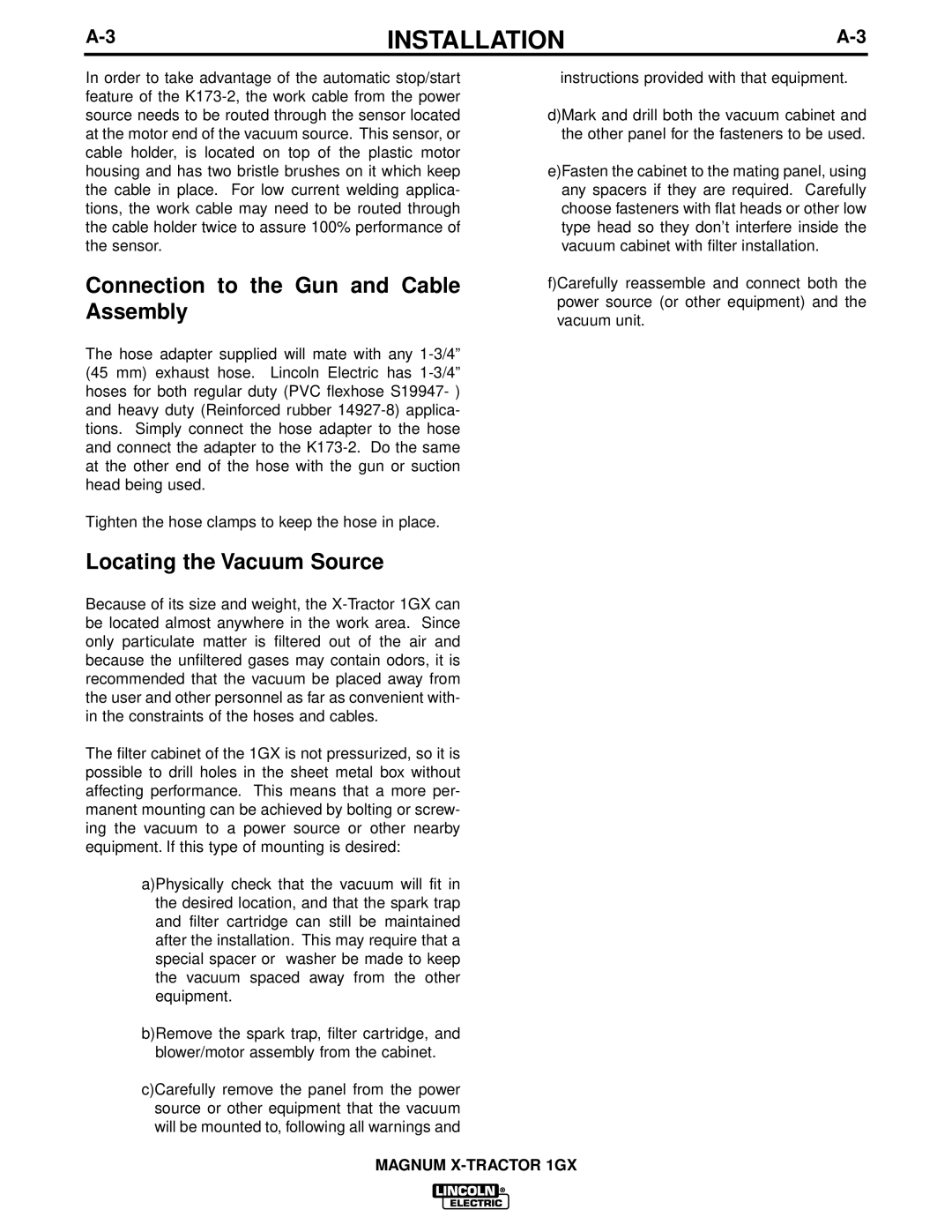INSTALLATION | ||
|
|
|
In order to take advantage of the automatic stop/start feature of the
Connection to the Gun and Cable Assembly
The hose adapter supplied will mate with any
Tighten the hose clamps to keep the hose in place.
Locating the Vacuum Source
Because of its size and weight, the
The filter cabinet of the 1GX is not pressurized, so it is possible to drill holes in the sheet metal box without affecting performance. This means that a more per- manent mounting can be achieved by bolting or screw- ing the vacuum to a power source or other nearby equipment. If this type of mounting is desired:
a)Physically check that the vacuum will fit in the desired location, and that the spark trap and filter cartridge can still be maintained after the installation. This may require that a special spacer or washer be made to keep the vacuum spaced away from the other equipment.
b)Remove the spark trap, filter cartridge, and blower/motor assembly from the cabinet.
c)Carefully remove the panel from the power source or other equipment that the vacuum will be mounted to, following all warnings and
instructions provided with that equipment.
d)Mark and drill both the vacuum cabinet and the other panel for the fasteners to be used.
e)Fasten the cabinet to the mating panel, using any spacers if they are required. Carefully choose fasteners with flat heads or other low type head so they don’t interfere inside the vacuum cabinet with filter installation.
f)Carefully reassemble and connect both the power source (or other equipment) and the vacuum unit.
MAGNUM
